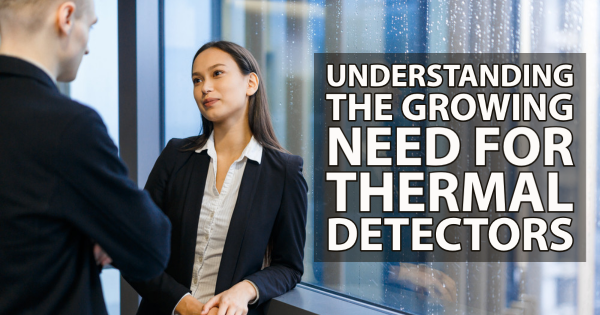Factors to Consider When Choosing Thermal Detector Tech for Schools
As schools reopen for the spring semester, school heads should consider buying thermal detectors. The increasing demand has caused a boom in the supply of these devices. Recently the United States Governmental statistics showed some institutions were using metal detectors with 2% of elementary schools, 10% of high schools, and 7% of middle schools using them. However, not all solutions provide accurate results. Some products are high-precision products, while others like thermal guns are highly inaccurate. Given the number of devices in the market, school heads need to know how to differentiate high-quality products from suboptimal ones. Here are some of the factors school heads should consider when buying a thermal detector.
How a Thermal Detector Works
The device uses thermal imaging technology to evaluate the amount of heat (infrared radiation) emitted from an object. The measurements are processed using special software to display the heat readings visually. Since it is a non-contact device, it can be installed in different ways to monitor human body temperature without coming into contact with the individual. The technology can be used in walk-through temperature scanners too.
What to Consider When Buying and Installing Thermal Cameras
Initially, thermal cameras were designed to detect trespassing in restricted areas. However, in the wake of COVID-19, the devices' current demand focuses on detecting elevated body temperature. So far, there are many types of thermal cameras designed for this function with varying price ranges, accuracy, and speeds of detection.
The user only needs to stand steadily in front of the checkpoint to obtain their temperature readings. For high traffic institutions like schools, the devices should also be equipped with crowd detection capabilities to enhance screening speed. It is also important to have an alarm that can alert on-site staff to take corresponding actions when an individual has a high temperature. A newer thermal scanner for sale combines body temperature detection and facial recognition capabilities to check the individual’s temperature, credentials, and if they are wearing a mask.
The device's placement also plays a critical role in its effectiveness because thermal metal detectors are susceptible to ambient conditions. Consider a situation where the device is pointing at a building entrance with the sun shining directly. Such a placement affects the tool’s ability to detect temperature accurately. The accuracy may drop from +/- 0.3 to +/- 0.5 degrees. On that note, schools should also think about how they plan to deploy screening technologies. Handheld devices, for example, provide maximum flexibility but are only short-term solutions. If temperature screening becomes a long-term requirement, they will need permanent installations.
Another emerging issue has to do with the privacy regulations. Some countries have tight privacy laws regarding using facial recognition technology to measure one’s body temperature. School heads should acquaint themselves with such laws when purchasing the devices. They should also explain why such a solution has been deployed, how it will be implemented, and allow users to provide feedback if they have concerns.
FDA Guidelines on Using a Thermal Detector
The FDA also issued an enforcement policy, in April 2020, for using telethermographic systems equipped with thermal imaging technology to measure body temperature during the pandemic. The policy was enforced to support the agency’s efforts to increase the availability of thermographic systems to address public health concerns associated with COVID-19. With so many manufacturers flooding the market with these thermal devices, it is important to purchase them from suppliers that meet these basic FDA requirements:
- The devices should meet the performance requirements outlined in the International Electrotechnical Commission Standards
- Their labels must prominently show that the device only provides body temperature measurements to aid in diagnosing COVID-19 or other diseases. Also, if the device shows a high body temperature, the user must confirm it with a second evaluation method like a medical-grade thermometer
- The device should measure the temperature of one person at a time
- The labeling should also show the device’s performance characteristics, including methods of calibration and its accuracy
- It should show how to use the device
These guidelines should guide schools in finding suitable thermal detector systems for their institutions. They should be accurate, have crowd detection capabilities while adhering to FDA requirements.














